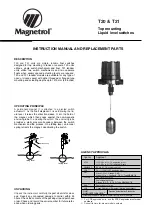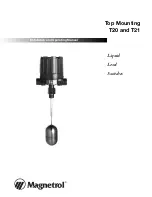
Clustering Overview
603
Figure 175
Role changing rule
■
A cluster can have only one management device, which is necessary to the cluster.
The management device collects NDP/NTDP information to discover and confirm
candidate devices, which can be then added into the cluster through manual
configurations.
■
A candidate device can be added into a cluster to become a member device.
■
A member device can be removed from the cluster and becomes a candidate
device.
Introduction to NDP
NDP is the protocol for discovering the related information of the adjacent points.
NDP runs on the data link layer, so it supports different network layer protocols.
NDP is used to discover the information of directly connected neighbors, including the
device type, software/hardware version, and connecting port of the adjacent devices.
It can also provide the information concerning device ID, port address, hardware
platform and so on.
All the devices supporting NDP maintain an NDP information table. The table entry
will be removed by NDP automatically when the aging timer expires. You can also
clear the current NDP information to collect new adjacent information.
The device running NDP broadcasts packets carrying NDP data to all the activated
ports regularly. The packet carries the holdtime, indicating how long the receiving
device has to keep the updating data. The receiver only keeps the information in the
NDP packet, but not forwards it. The corresponding data entry in the NDP table will
be updated with the arriving information. If the new information is same as the old
one, only the holdtime will be updated.
Introduction to NTDP
NTDP is a protocol for network topology information collection. NTDP provides the
information of available devices to join the cluster and collects the information about
switches within the specified hops for cluster management.
Based on the adjacent table information provided by NDP, NTDP transmits and
forwards NTDP topology collection request to collect NDP information and
neighboring connection information of every device in a certain network range. After
collecting the information, the management device or the network administrator can
perform needed functions.
R
e
m
o
ve
fr
o
m
a
c
lu
ste
r
Member device
R
em
ov
e
fr
om
a
cl
us
te
r
D
es
ig
na
te
d
as
a
m
an
ag
em
en
t d
ev
ic
e
A
d
d
e
d
to
a
c
lu
ste
r
Candidate device
Management device
R
e
m
o
ve
fr
o
m
a
c
lu
ste
r
Member device
R
em
ov
e
fr
om
a
cl
us
te
r
D
es
ig
na
te
d
as
a
m
an
ag
em
en
t d
ev
ic
e
A
d
d
e
d
to
a
c
lu
ste
r
Candidate device
Management device
Содержание 5500 SI - Switch - Stackable
Страница 24: ...24 ABOUT THIS GUIDE...
Страница 30: ...30 CHAPTER 1 GETTING STARTED Figure 3 Setting up a New Connection Figure 4 Configuring the Port for Connection...
Страница 50: ...50 CHAPTER 1 GETTING STARTED...
Страница 54: ...54 CHAPTER 2 ADDRESS MANAGEMENT CONFIGURATION...
Страница 78: ...78 CHAPTER 3 PORT OPERATION...
Страница 88: ...88 CHAPTER 4 XRN CONFIGURATION...
Страница 122: ...122 CHAPTER 8 VLAN VPN CONFIGURATION...
Страница 216: ...216 CHAPTER 15 SSH TERMINAL SERVICES...
Страница 268: ...268 CHAPTER 16 IP ROUTING PROTOCOL OPERATION...
Страница 308: ...308 CHAPTER 17 NETWORK PROTOCOL OPERATION...
Страница 349: ...349...
Страница 350: ...350 CHAPTER 18 MULTICAST PROTOCOL...
Страница 522: ...522 CHAPTER 22 FILE SYSTEM MANAGEMENT...
Страница 584: ...584 CHAPTER 30 PASSWORD CONTROL CONFIGURATION OPERATIONS...
Страница 600: ...600 CHAPTER 31 MSDP CONFIGURATION...
Страница 614: ...614 CHAPTER 32 CLUSTERING...
Страница 670: ...670 CHAPTER C AUTHENTICATING THE SWITCH 5500 WITH CISCO SECURE ACS...
















































